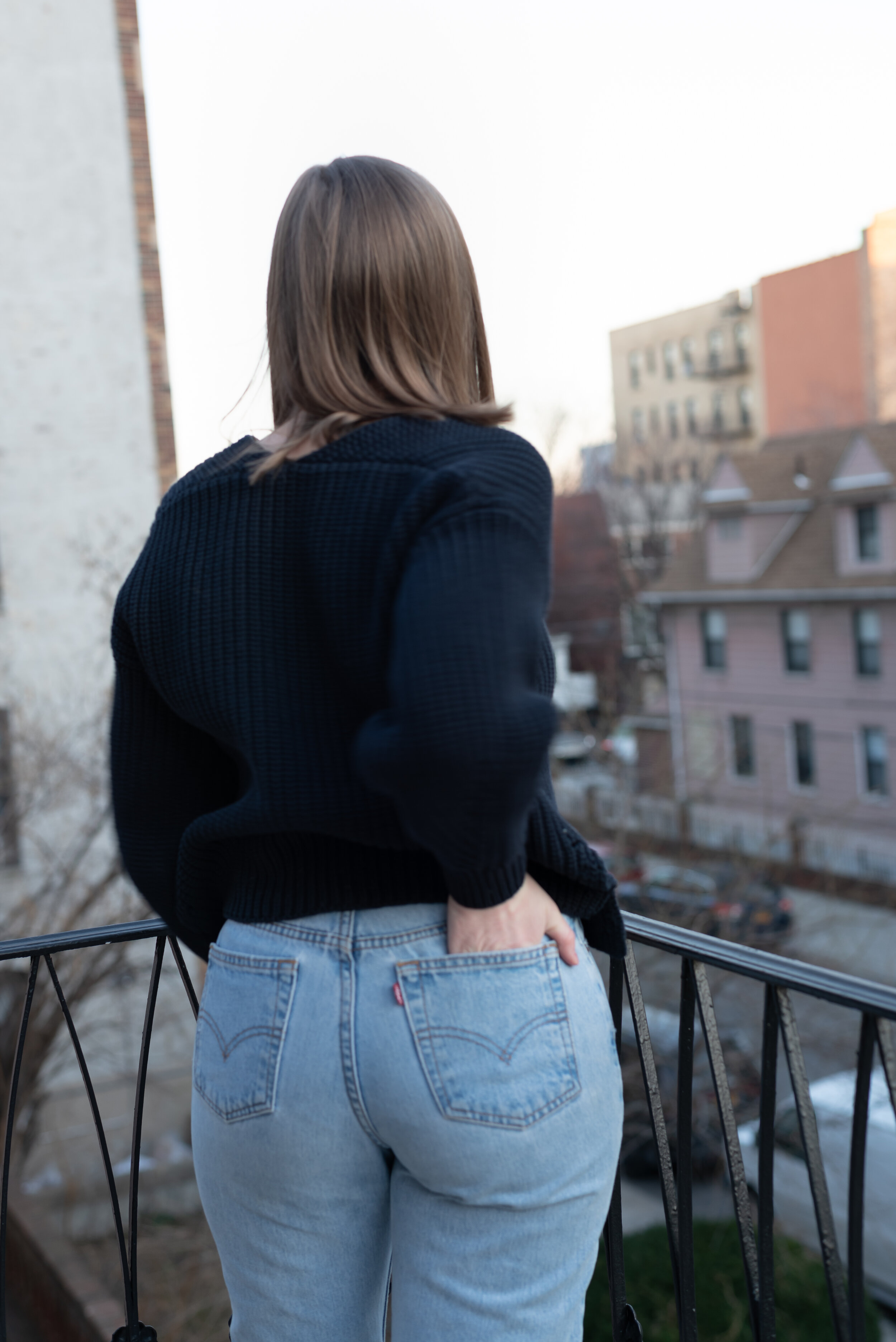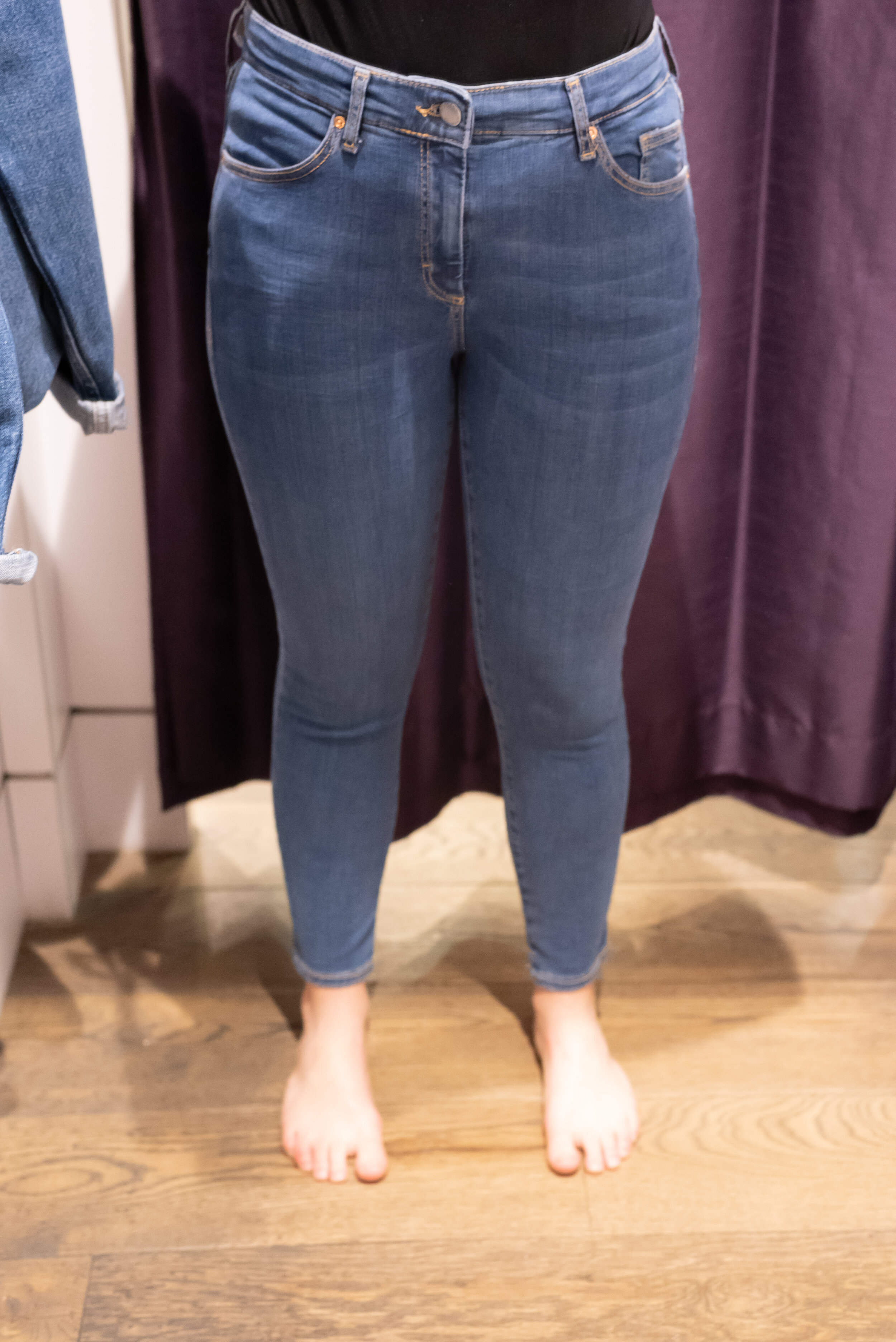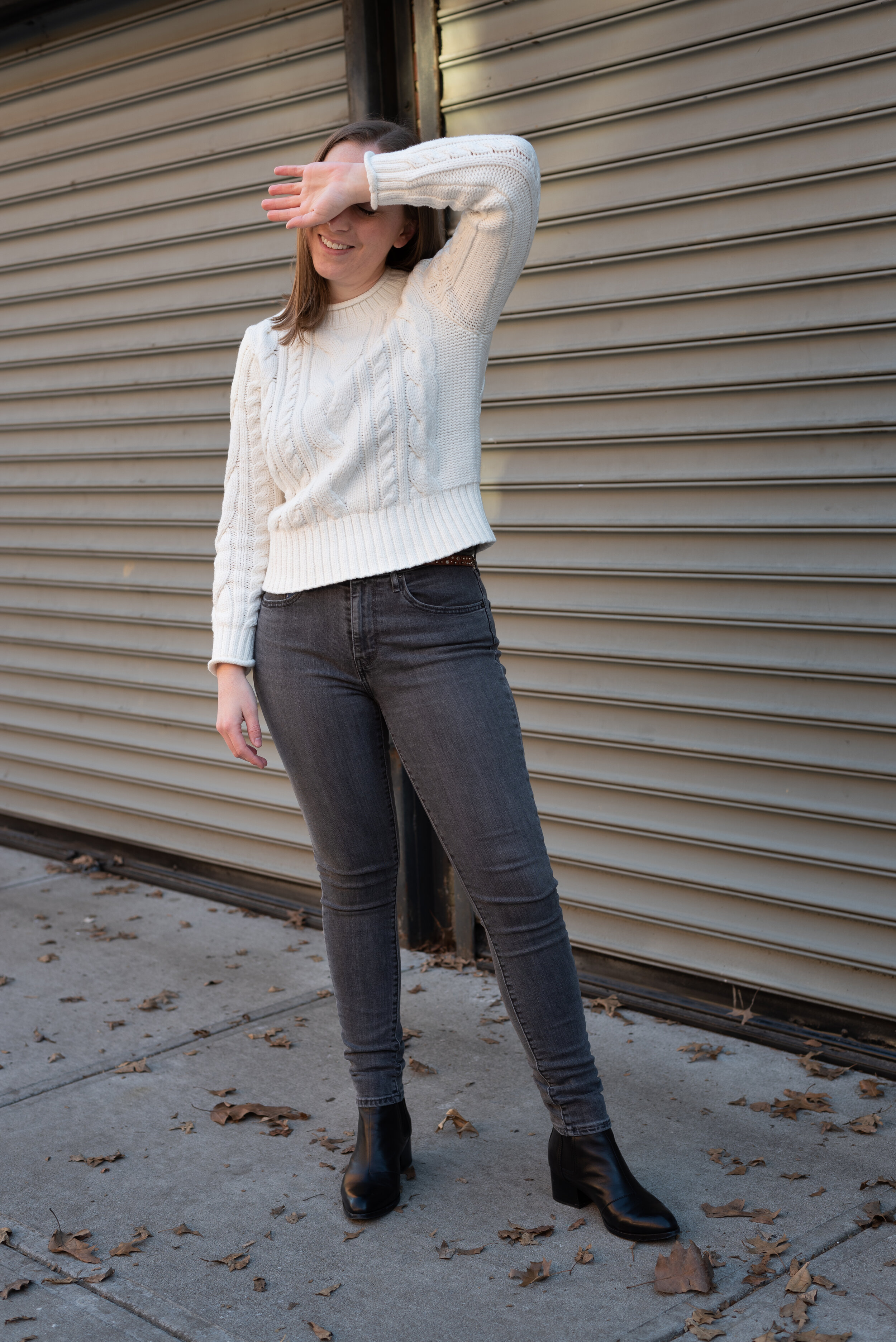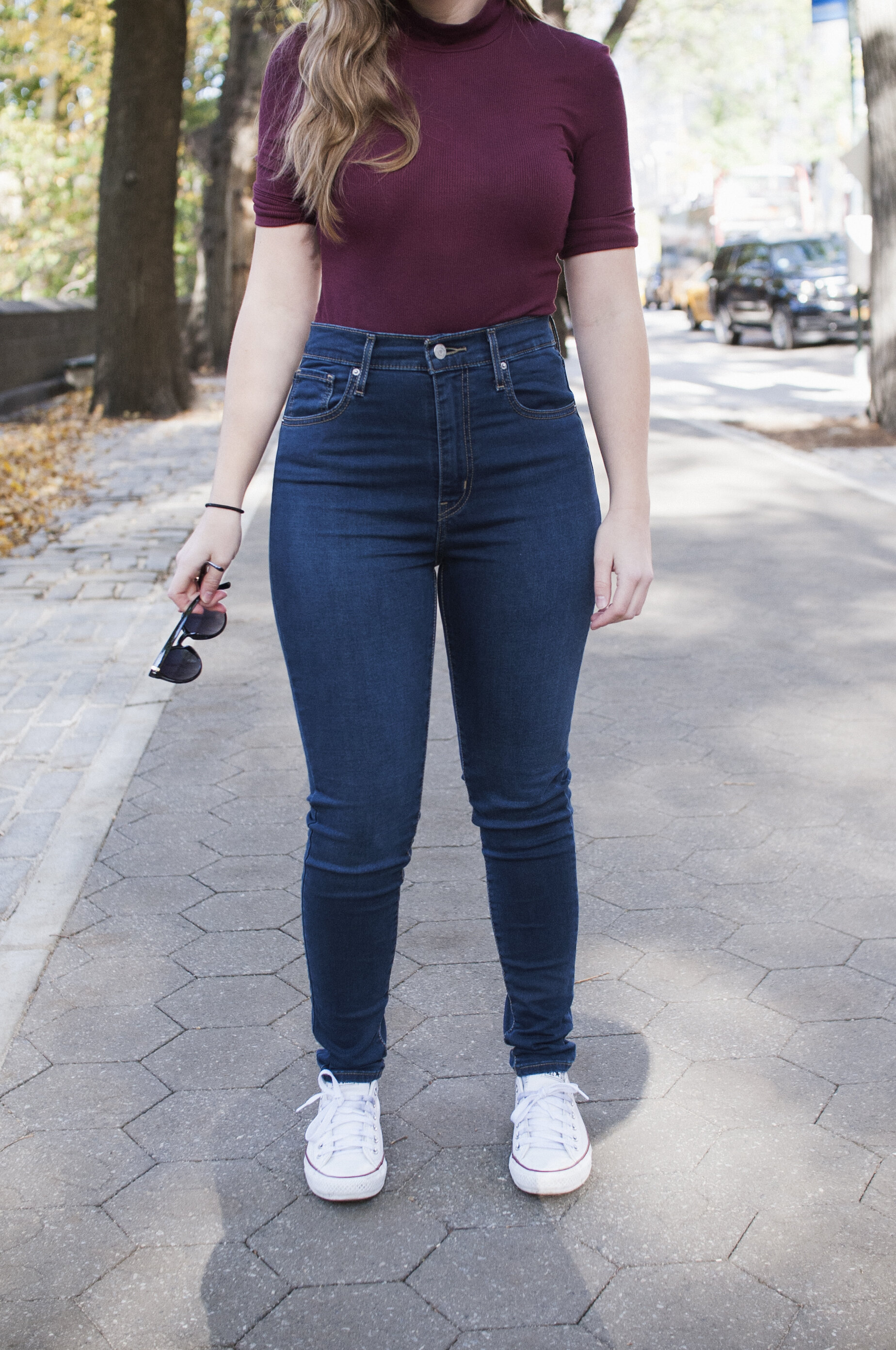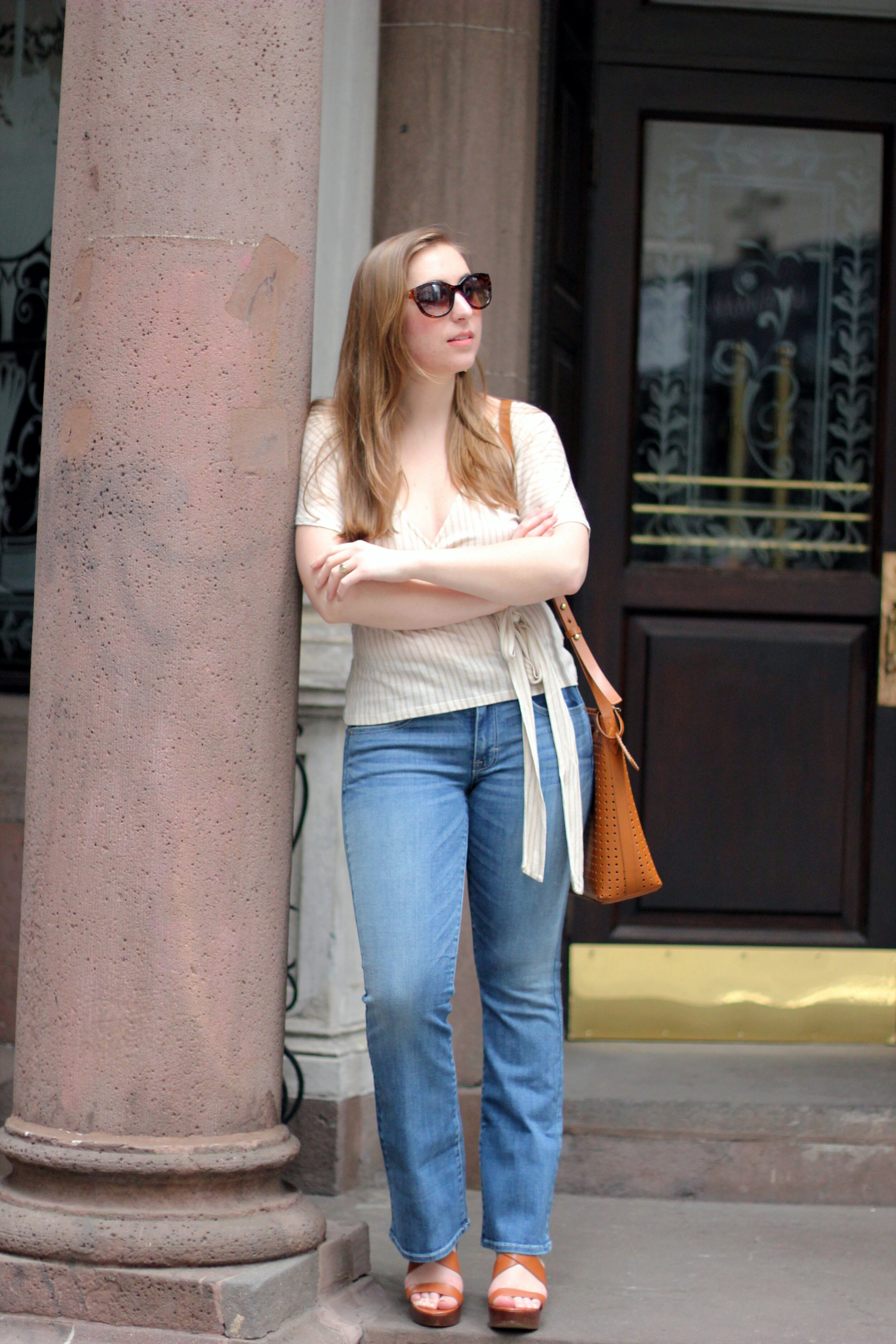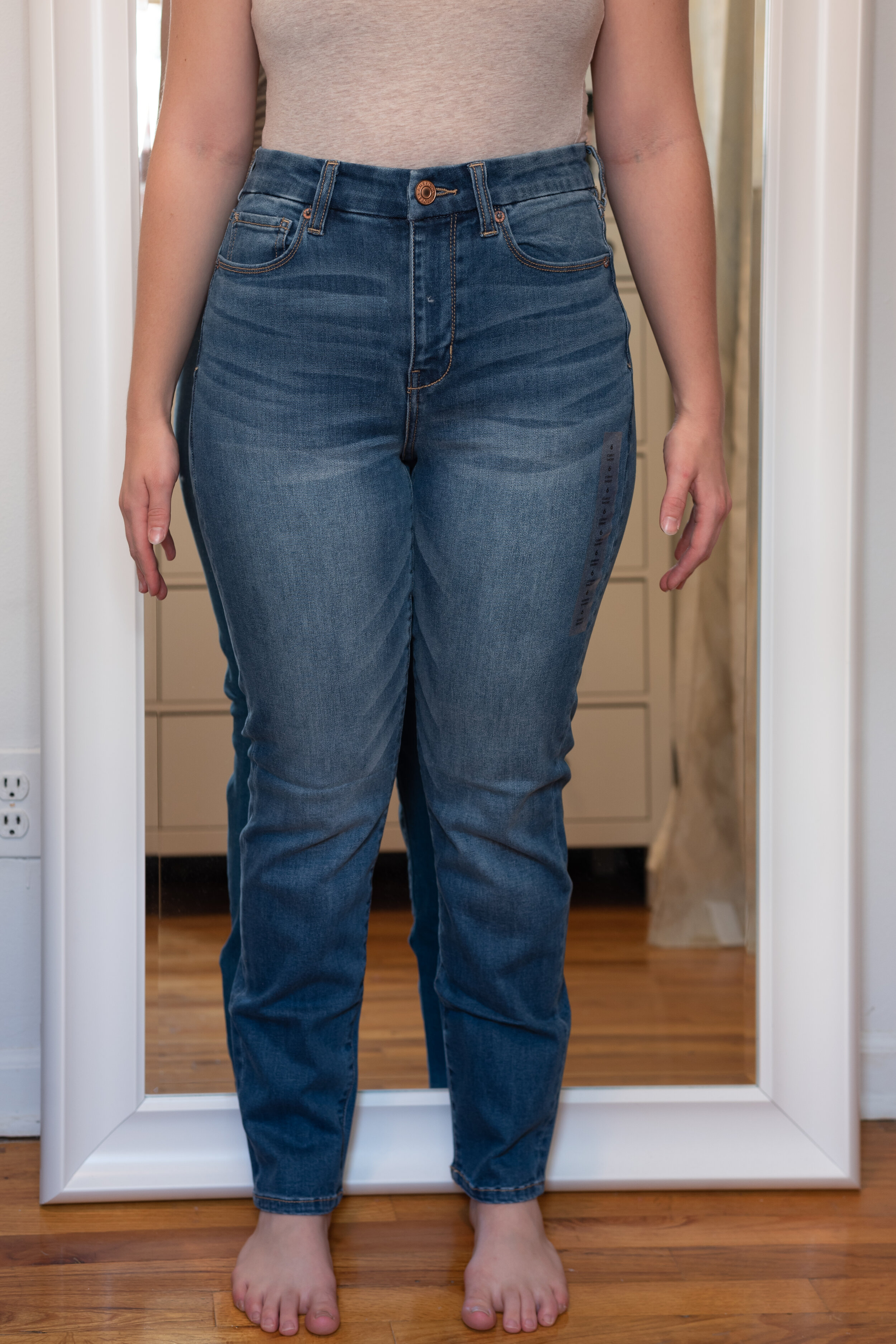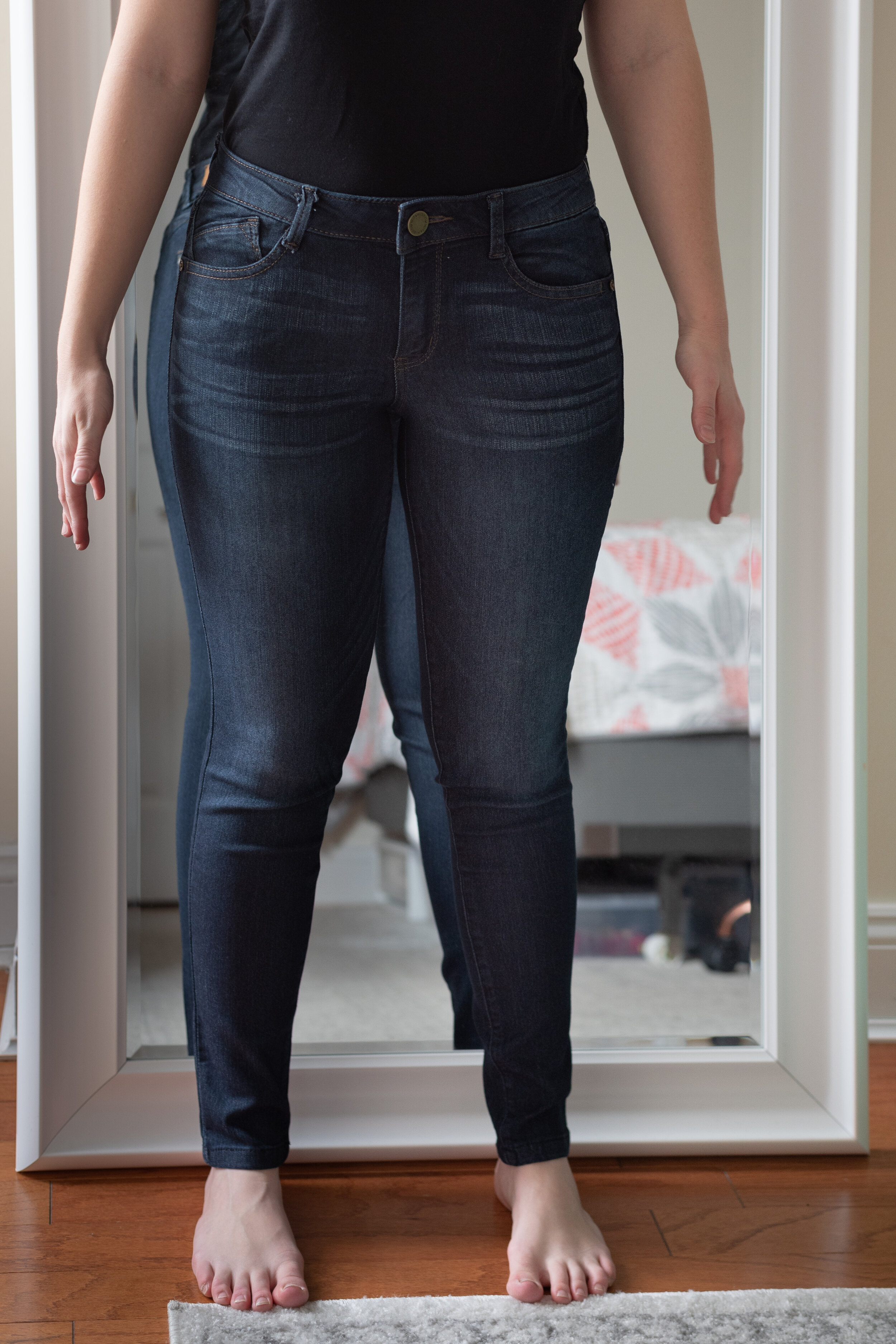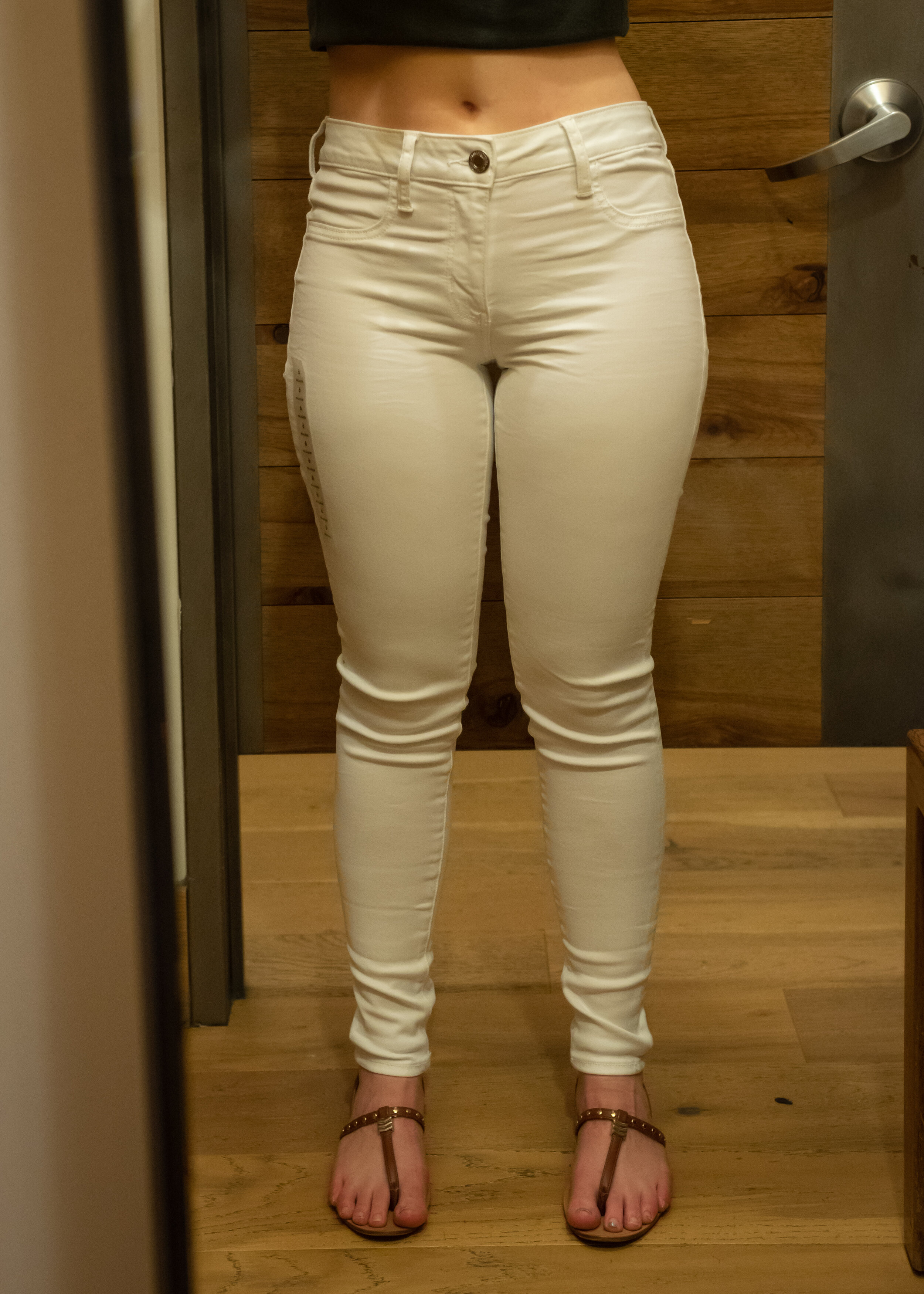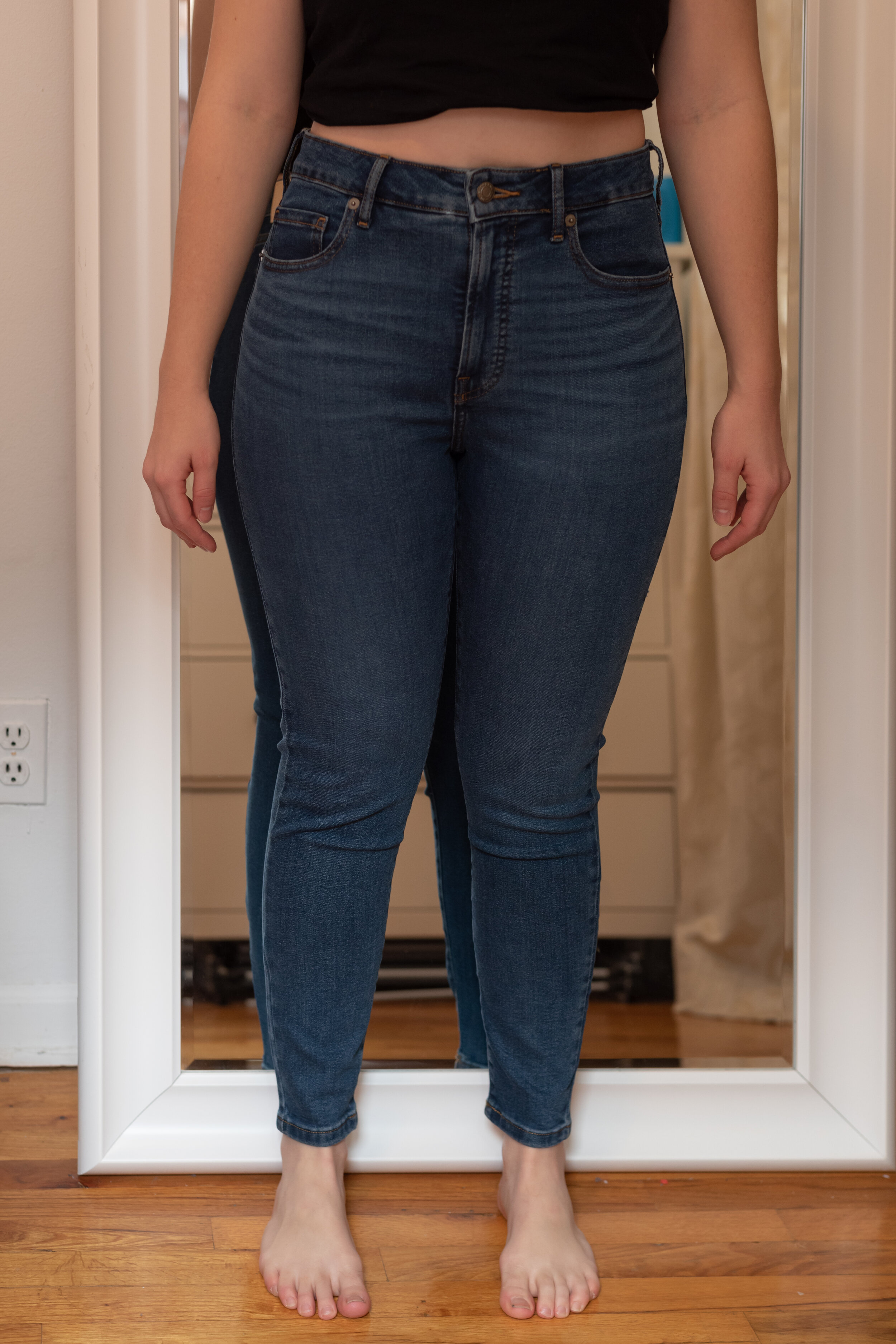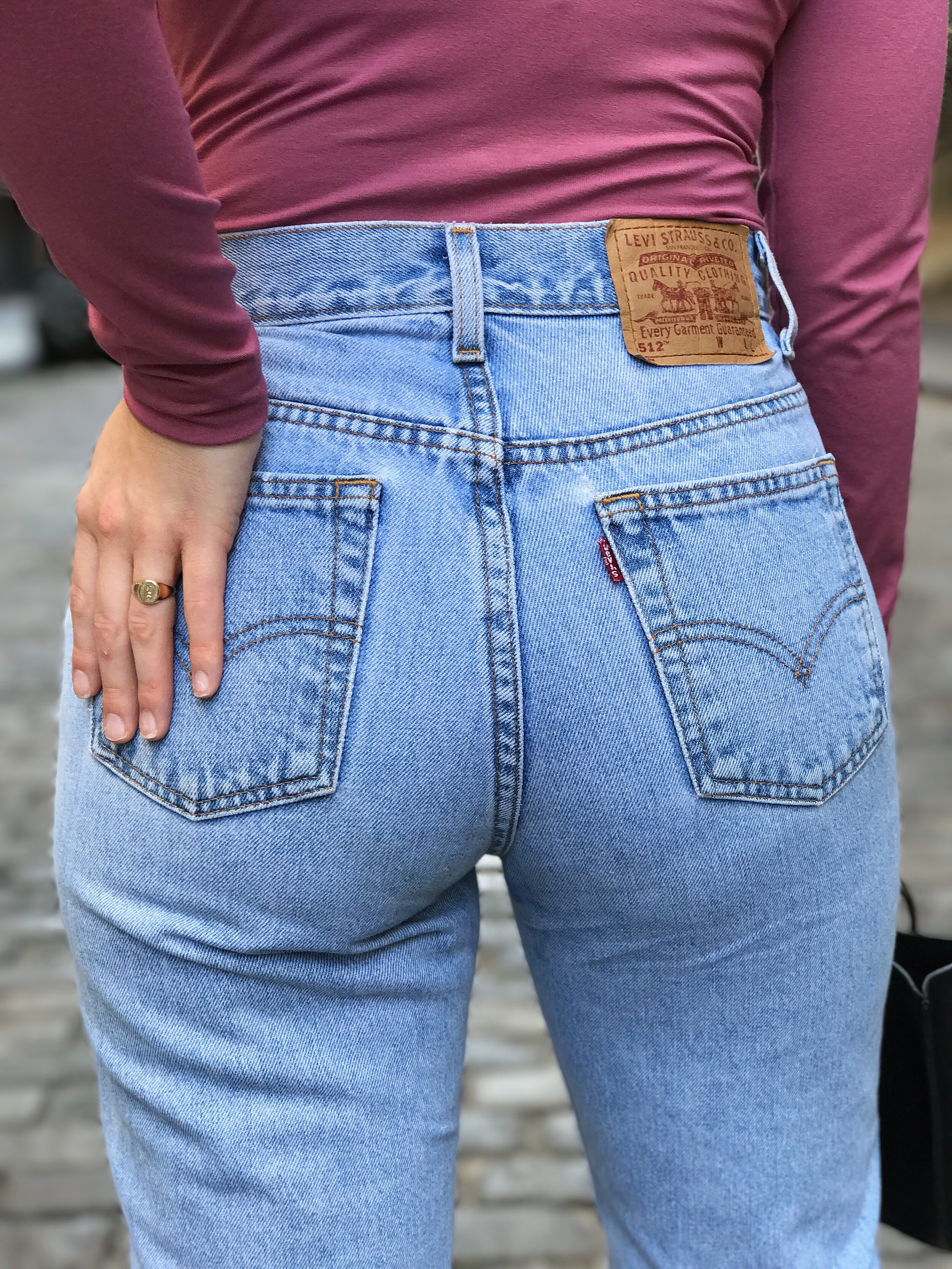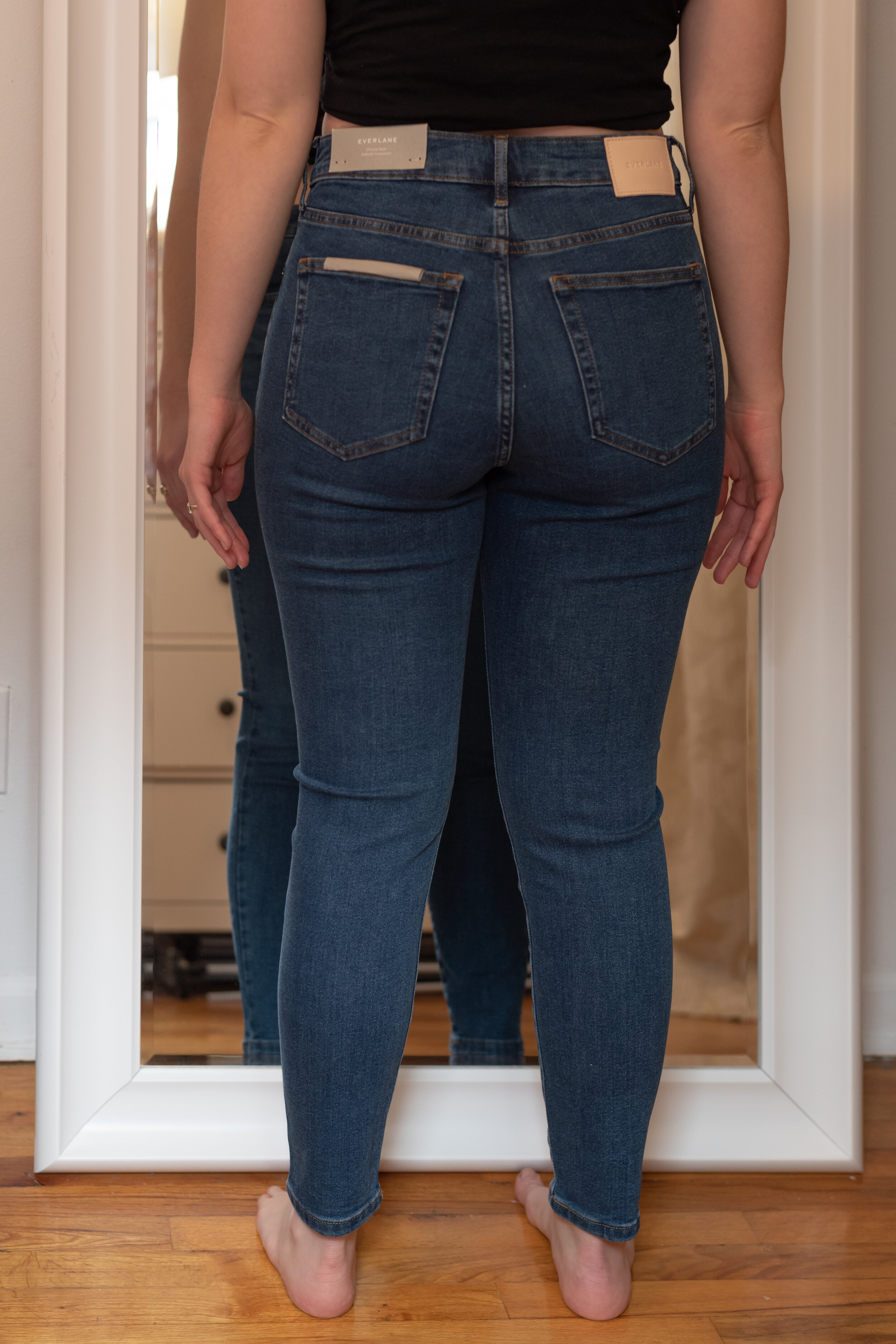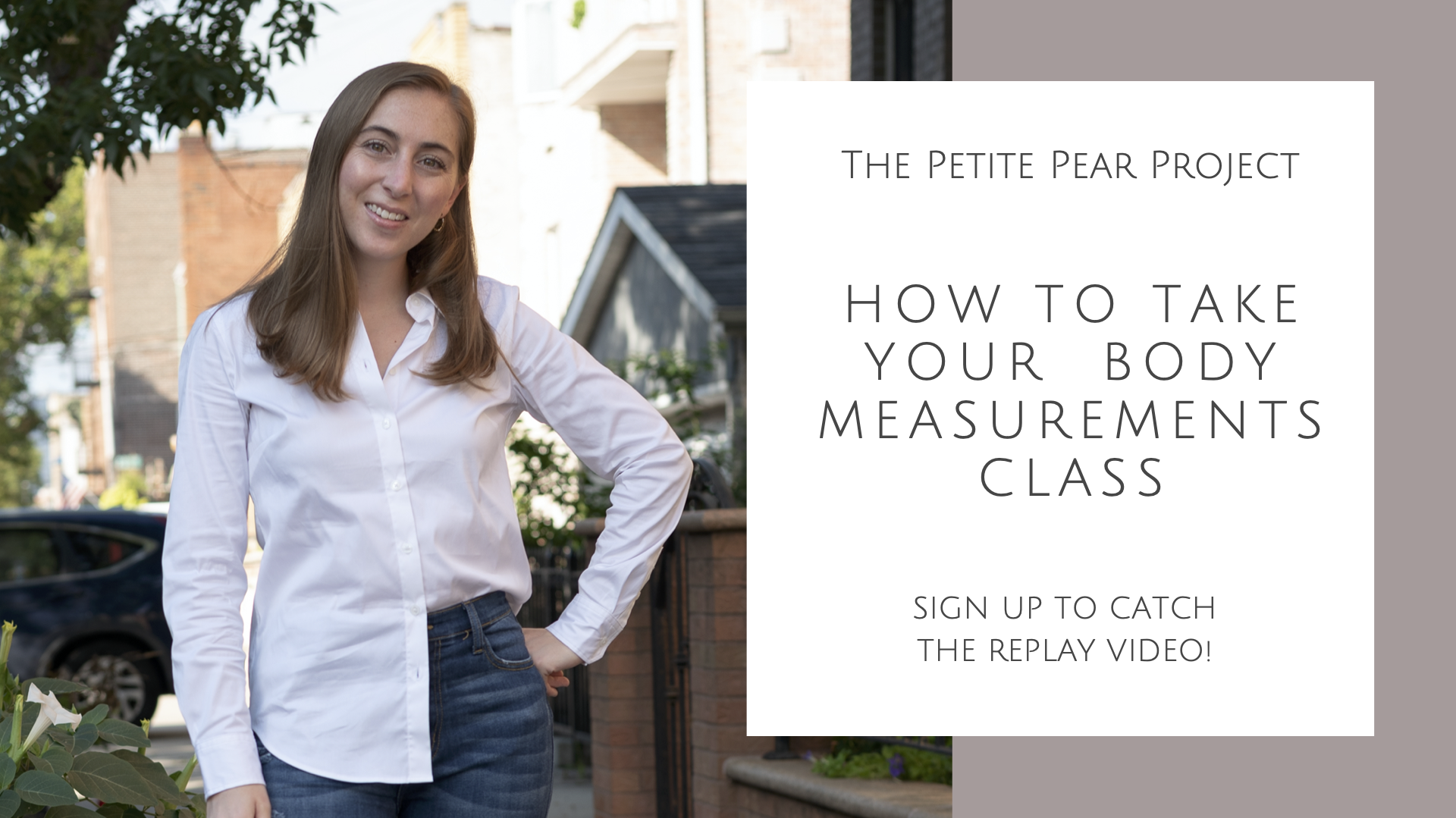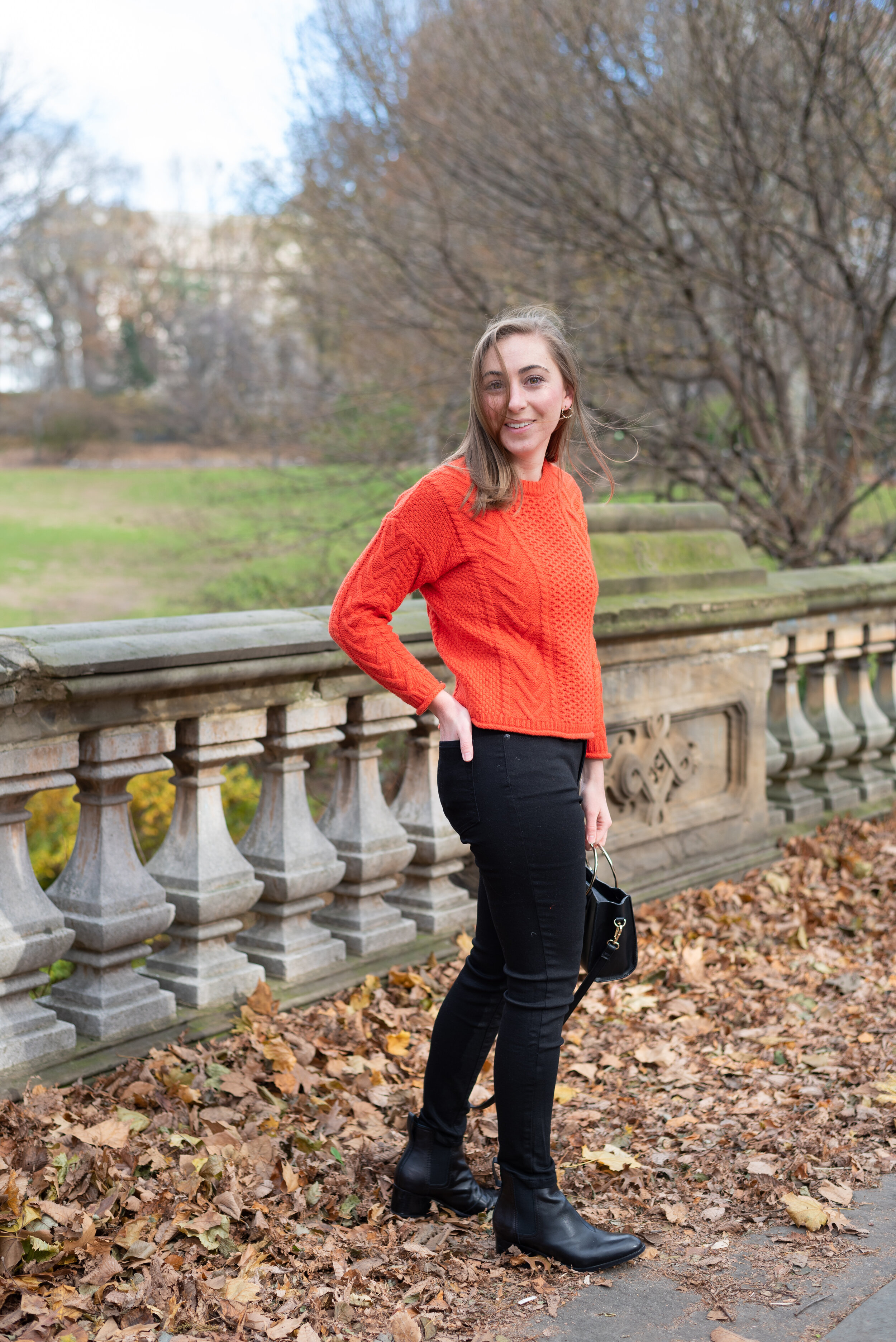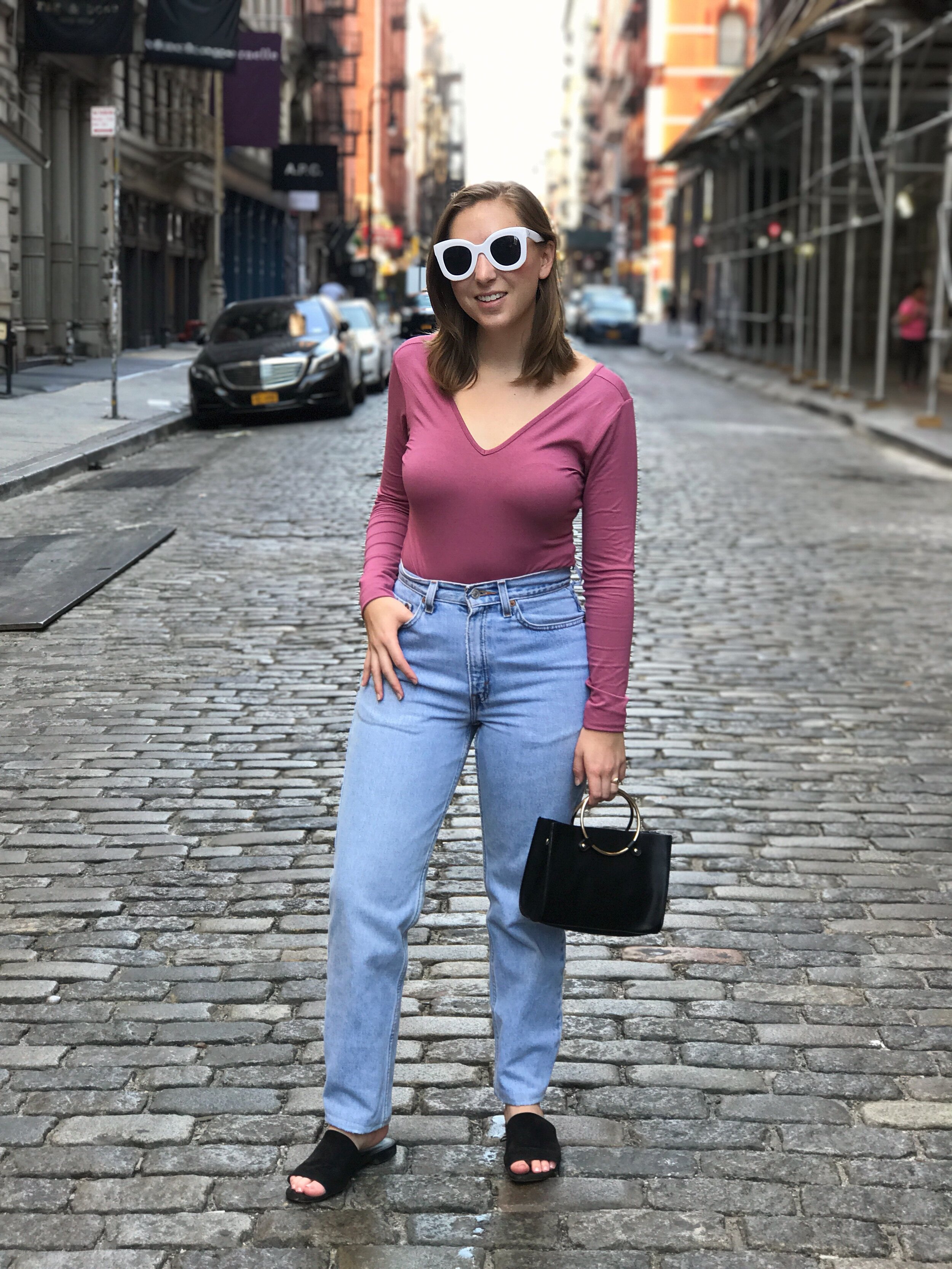HOW TO TELL IF YOUR JEANS *ACTUALLY* FIT
NOTE: This blog post contains “affiliate links” (i.e. a link with a special tracking code). If you purchase something via “affiliate links” on my blog, I may earn commission.
Since embarking on the journey of starting my own brand, I’ve learned so much about how pants are supposed to fit. While my brand LNO STUDIO focuses on trousers (at the moment), the principles I’ve learned can be applied to denim as well. I want to share these lessons with you because I know they’ll come in handy when you’re shopping for jeans. Furthermore, these tips will help you find jeans that you actually want to wear and keep. I know for myself that I tend to keep clothes longer when they fit me well because they are more comfortable!
1. YOUR JEANS SHOULD KISS YOUR WAIST.
What do I mean by this? You want the waistband of your jeans to feel secure around your waist so they aren’t sliding down and also aren’t cutting into you.
Too Loose - Out of all the fit issues that I cover in this post, I think this is the easiest one to identify! If your jeans feel like they are falling down or you have to wear a belt to keep them up, then they are too big for you.
Too Tight - If the waistband feels snug on your waist (and not in a good way) then your jeans are too tight. Or if it feels like the waistband is digging into your stomach and/or hip bones, then the jeans are too tight for you. Another tell tale sign the waistband is too tight is when the fly area is pulling open.
Just Right - The waistband feels secure around your waist and you don’t need a belt to keep your jeans up.
2. YOUR JEANS ARE THE IDEAL LENGTH FOR THE STYLE.
Let’s start with skinny jeans as an example. When you wear skinny jeans ideally you want them to end either right above your ankle bone or cover your ankle bone. (Especially if you are planning to wear them with flats or sneakers.) However, if they are much longer than this, they will bunch up around your ankle and make you look frumpy. My favorite skinny jeans that I own have an inseam length between 26’’ - 27’’.
Let’s move on to bootcut and flared jeans! With these styles, it’s good for the jeans to be a few inches longer than the inseam of your skinny jeans especially if you plan to wear them with heels.
3. YOUR JEANS DON’T LOOK BAGGY (UNLESS THAT’S THE STYLE).
To demonstrate this point, I’m going to use two different skinny jeans as examples. The pair on the lefthand side is from American Eagle and the pair on the righthand side is from Wit & Wisdom. You can see that the American Eagle jeans are baggy in the calf area and that’s because the calf measurement of the jeans is too big for me plus the leg opening is on the narrow side as well. (Calf measurement of jeans = 14.25’’). The Wit & Wisdom jeans on the other hand fit me much better and there’s no awkward bunching of fabric. (Calf measurement of jeans = 11.75”)
4. YOUR JEANS AREN’T “SMILING”.
You’re probably wondering what I mean by the word “smiling”. I’m referring to the horizontal drag lines that form across your hips and front crotch area of your jeans. Generally speaking, this fit issue occurs when the hip area of your jeans is too tight or the crotch doesn’t fit properly. Therefore it’s important to find jeans with sufficient room in the hip area and ones that don’t dig into your crotch. My Everlane curvy fit jeans (right image) have enough room in the hip area so they don’t “smile”.
5. THE BACK RISE IS LONG ENOUGH.
This fit issue is pretty easy to identify because you will feel it! If it feels like the back of your jeans are actively being pulled downwards, then the back rise is not long enough. Or if it feels like the jeans are digging into your crotch or thighs on your back side then that’s another tell tale sign. One pair of jeans that I experienced this fit issue with was Reformation’s Julia Cigarette jeans. This a high rise pair of jeans and the waistband did not fully come up to my natural waist on the back side. Additionally, I could feel the jeans digging into my crotch and thighs in back.
So then what does an ideal pair look like? I bought this pair of vintage Levi’s 512 high rise jeans a few years back and they fit me quite well. The back rise is long enough because the waistband comes all the way up to my natural waist on the back side. Additionally, I never feel like the jeans are being pulled downwards.
6. THERE ARE MINIMAL DRAG LINES ON THE BACK OF THE THIGHS.
This fit issue can be harder to spot since you have to pay attention to the back of your jeans! I recommend evaluating any jeans you try on in a full length mirror (so you can see the back) or have a friend help spot this for you! There are two main reasons that drag lines can occur on the back of your thigh. One the waist of your jeans is too loose, which causes the seat of the pants to sag down and the excess fabric to pool below your bottom. The second reason drag lines occur is because the thigh area of the jean is too tight. In my experience it’s hard to 100% avoid this issue altogether with “off the rack” jean sizing, but the important thing is to make sure the fit issue is as minimal as possible. My Levi’s 721 high rise jeans are probably the closest I have to come to minimizing this issue.
WISH JEAN SHOPPING WAS EASIER?
Learn how to take your waist, hip and inseam measurements in my free “How To Take Your Measurements” Class! Plus I share real-world examples so you’ll feel confident applying this knowledge the next time you go shopping! (It’s especially helpful if you’re shopping secondhand online for jeans!)
Catch the replay video of my FREE “How to Take Your Measurements Class” to see video demonstrations of taking each measurement. We’ll also cover how to read size and garment measurement charts when shopping online! Best of all, you’ll receive a copy of the class slides that you can reference whenever you want!

